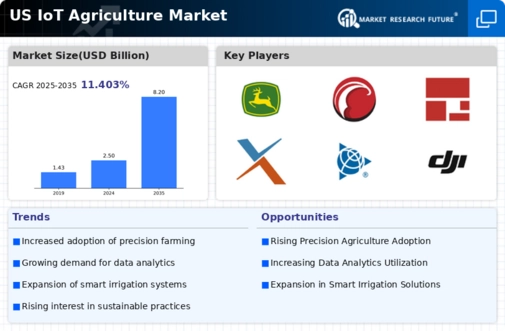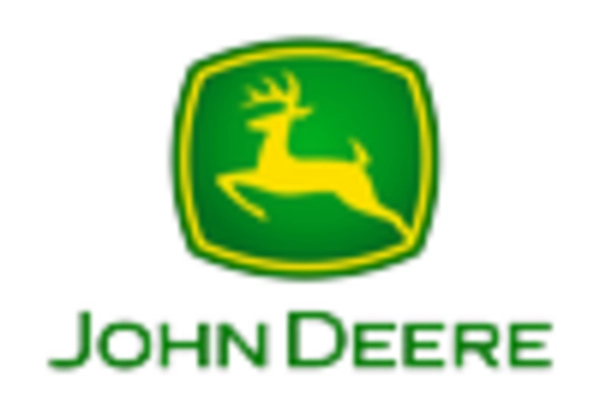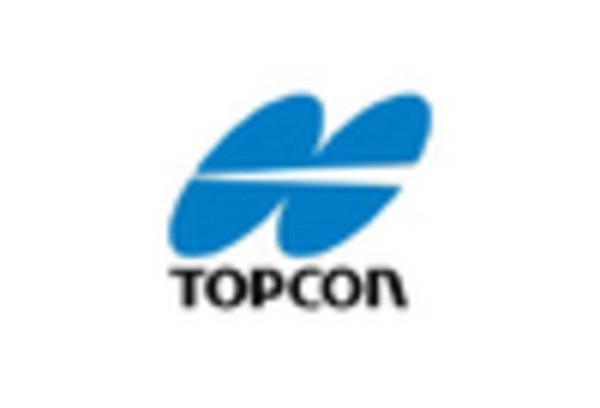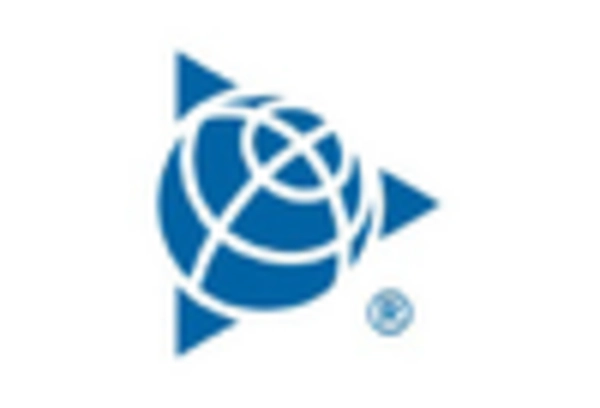Increased Investment in Smart Farming
Investment in smart farming technologies is a key driver of the IoT Agriculture Market. Venture capital funding for agri-tech startups has surged, with estimates suggesting an increase of over 50% in the last two years. This influx of capital is enabling the development of innovative IoT solutions that enhance productivity and efficiency in farming. As farmers seek to leverage technology to improve their operations, the iot agriculture market is poised for substantial growth. The potential for improved crop yields and reduced labor costs makes smart farming an attractive option for many agricultural stakeholders.
Rising Demand for Sustainable Practices
The increasing emphasis on sustainable agricultural practices is driving the IoT Agriculture Market. Farmers are increasingly adopting IoT solutions to monitor soil health, optimize water usage, and reduce chemical inputs. This shift is partly due to consumer demand for sustainably sourced products, which has surged by approximately 30% in recent years. As a result, the iot agriculture market is expected to grow, with projections indicating a potential increase in market value to $20 billion by 2026. The integration of IoT technologies allows for real-time data collection, enabling farmers to make informed decisions that align with sustainability goals.
Technological Advancements in IoT Devices
Technological innovations in IoT devices are significantly impacting the IoT Agriculture Market. The development of advanced sensors, drones, and automated systems enhances the efficiency of agricultural operations. For instance, the market for agricultural drones is anticipated to reach $4 billion by 2025, reflecting a growing trend towards automation. These devices facilitate precision farming, allowing for better crop monitoring and resource management. As technology continues to evolve, the iot agriculture market is likely to see increased adoption of these sophisticated tools, which can lead to higher yields and reduced operational costs.
Regulatory Support for Agricultural Innovation
Regulatory support for agricultural innovation is fostering growth in the IoT Agriculture Market. Government initiatives aimed at promoting technology adoption in farming are becoming more prevalent. For example, recent policies have allocated over $500 million in funding for agricultural technology research and development. This support encourages farmers to invest in IoT solutions that enhance productivity and sustainability. As regulatory frameworks evolve to support innovation, the iot agriculture market is expected to benefit from increased adoption of advanced technologies, ultimately leading to improved agricultural outcomes.
Growing Awareness of Data-Driven Decision Making
The growing awareness of the benefits of data-driven decision making is influencing the IoT Agriculture Market. Farmers are increasingly recognizing the value of data analytics in optimizing their operations. By utilizing IoT technologies, they can gather and analyze data on weather patterns, soil conditions, and crop health. This trend is reflected in a reported increase of 40% in the adoption of data analytics tools among farmers in the past year. As more agricultural stakeholders embrace data-driven strategies, the iot agriculture market is likely to expand, offering new opportunities for innovation and efficiency.

















Leave a Comment